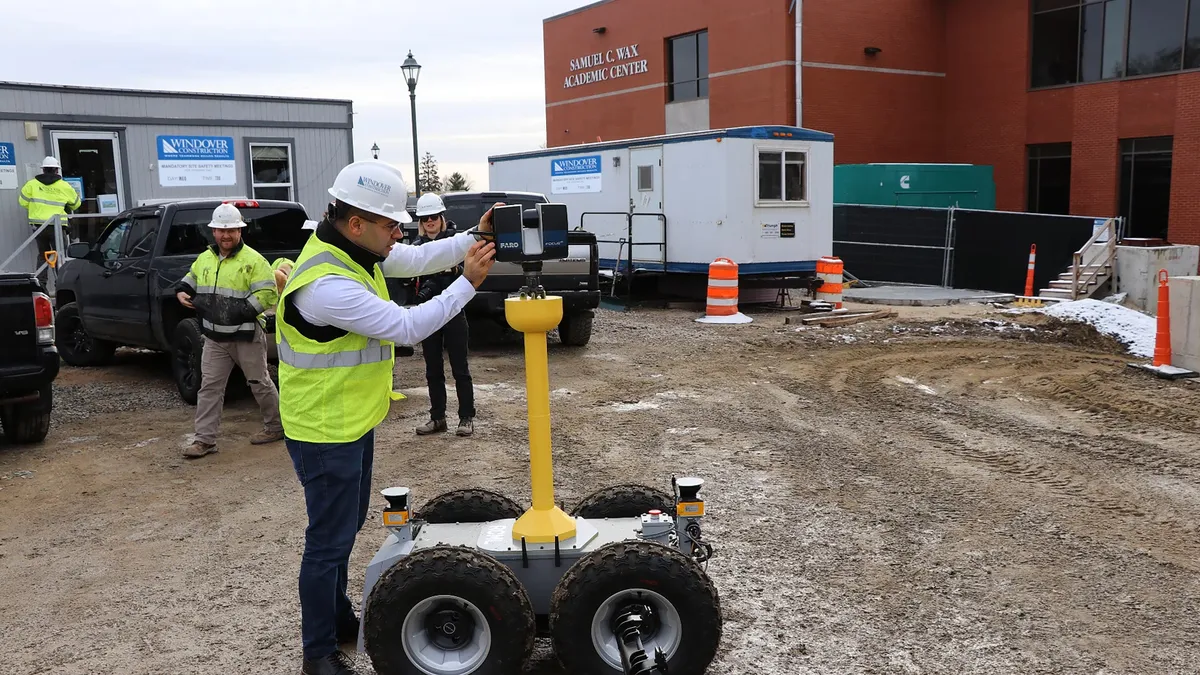Dive Brief:
- Autodesk Innovator of the Year Amr Raafat has teamed with a robot software company to develop an autonomous laser scanning and layout planning robot that is being used on Windover Construction work sites.
- The robot is able to move around on uneven surfaces to predetermined locations to scan indoor and outdoor spaces, as well as to measure and draw plans for walls and spaces that would need to be meticulously measured by a human, according to Raafat, Windover Construction’s vice president of VDC and technology.
- The robot can take what is some of the most tedious, but essential, work people do and perform the tasks more accurately, while freeing up workers onsite for more important tasks.
Dive Insight:
Laser scanning can take up to 16 minutes per space, Raafat said. Performing that task multiple times a day or week has become necessary for tracking construction progress, especially with BIM modeling, but the time it takes up can be costly and time consuming.
Last year, Raafat won Autodesk’s award for his innovative use of drones to capture images and develop a 3D model to embed into the BIM workflow.
The idea for the laser-scanning robot was hatched at the Autodesk Technology Center in Boston, where Raafat met representatives from software firm RCML, which was launched in 2015 at the Massachusetts Institute of Technology. The company specializes in creating software languages for industrial robots to communicate with each other, and the scanning robot concept was conceived during a Resident Idea Exchange, a monthly meeting meant to foster collaboration, Sophia Zelov, AEC industry engagement manager for the Autodesk Technology Center, told Construction Dive.
Lana Graf, RCML’s head of global strategy and business development, said the tech firm was looking to move into the construction industry and having a presence at the technology center helped facilitate that collaboration. RCML provided the robot’s software and hardware, while Raafat provided a vision for what the bot could do onsite and what challenges the robot could solve.
“We know that more robotic integration on the jobsite is coming, but it has been relatively slow to implement as sites and projects are unique, conditions are always unpredictable and the industry is segregated,” Zelov said.
RCML's platform allows users to program and connect any robot regardless of model and brand – significantly speeding up integration and deployment of industrial automation solutions, according to the company's website. The software eliminates the need to use proprietary languages and programming tools specific to each equipment and robotic brand.
Raafat and Graf agreed that contractors and tech firms need to work together to best solve the industry's biggest challenges.
“It’s not possible to find solutions if you are just a developer, software engineer or construction company,” Graf said. “It is possible to find these solutions together.”













